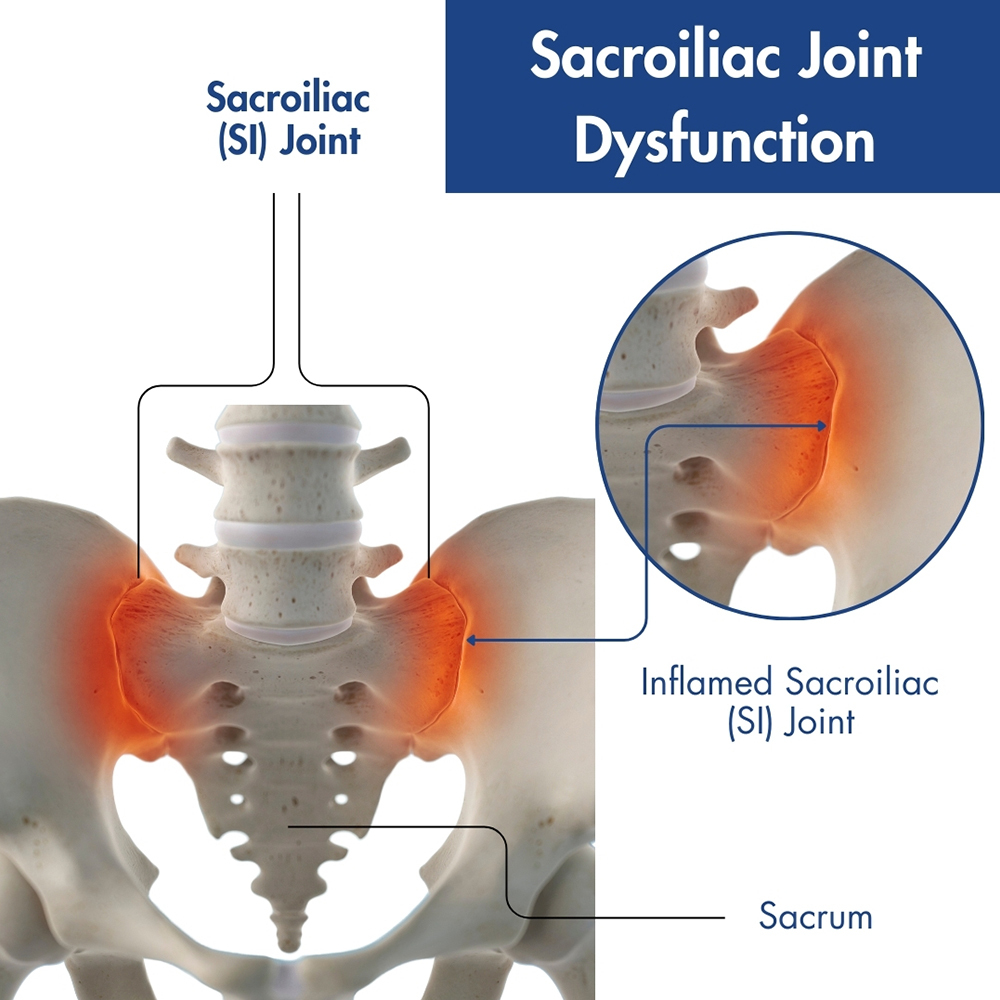We’re pleased to announce that Pain Physicians of Wisconsin is now Pro Spine Pain.
We’re pleased to announce that Pain Physicians of Wisconsin is now Pro Spine Pain.
 Persistent lower back pain can often be attributed to sacroiliac joint (SI) dysfunction, a condition that mimics various other back ailments. With nearby pain management specialists available, there’s no need to wait. The experienced professionals at Pro Spine & Pain offer safe and effective treatments, prioritizing minimally invasive procedures. For an accurate diagnosis and optimal treatment at one of our five locations in Wisconsin, schedule a consultation today.
Persistent lower back pain can often be attributed to sacroiliac joint (SI) dysfunction, a condition that mimics various other back ailments. With nearby pain management specialists available, there’s no need to wait. The experienced professionals at Pro Spine & Pain offer safe and effective treatments, prioritizing minimally invasive procedures. For an accurate diagnosis and optimal treatment at one of our five locations in Wisconsin, schedule a consultation today.
Sacroiliac (SI) joints, the small joints linking the base of the spine to the hips, play a crucial role in shock absorption between the upper and lower body. Sacroiliac joint dysfunction, stemming from issues with these joints, often manifests as lower back pain and leg discomfort. Whether caused by excessive movement (hypermobility) or limited movement (hypomobility) in these joints—be it due to sports activities or even just the way you walk—Pro Spine & Pain’s compassionate medical experts can provide diagnosis and treatment. Contact us for more information and take the first step towards sacroiliac joint dysfunction treatment or for other potential causes of your lower back pain.
The symptoms associated with SI joint dysfunction often mirror those of other conditions, highlighting the importance of obtaining a definitive diagnosis from your pain management specialist in Wisconsin.
Conditions like a herniated disc in the lumbar spine, a pinched nerve, or arthritis can present similar symptoms, including:
Movements like bending, twisting, or lifting can increase discomfort. Furthermore, you may experience muscle tenderness or tightness in the hips or buttocks. Inflammation of the sacroiliac joint is termed sacroiliitis.
Sacroiliac joint dysfunction may arise from various factors, including trauma resulting from a fall, sports injury, or car accident. Abnormal movements of the sacroiliac joint, such as hypermobility (due to loose ligaments) or hypomobility (insufficient movement) can also cause the problem. Additionally, degenerative joint conditions like arthritis may lead to the gradual breakdown of the sacroiliac joints.
This condition is caused by stability in the SI joint, causing inflammation and pain. Poorly aligned posture can be a contributing factor, so those with poor posture or age-related joint deterioration are typically at risk.
Activities that repetitively stress the joint, such as heavy lifting and participation in contact sports, can also elevate the risk of sacroiliac joint dysfunction.
Pregnancy introduces a unique set of stressors, causing ligaments to stretch in preparation for childbirth. This added strain on the lower back and pelvis can result in SI joint pain, persisting for some women even after pregnancy.
To pinpoint the source of pain, your healthcare provider will conduct a comprehensive physical examination and review your medical history. This may involve assessing the strength and flexibility of your joints or applying pressure to specific areas, like the iliac crest, to confirm the sacroiliac joint as the origin of your pain. Specialized tests are employed to rule out conditions with similar symptoms.
Treatment for dysfunction of the SI joint typically commences with resting the joint for one or two days, accompanied by the application of ice or heat to reduce the inflammation. Over-the-counter pain medications are recommended for relieving mild to moderate pain. In cases of severe pain, your doctor may prescribe short-term use of prescription pain medication or sacroiliac joint injections. Physical therapy aims to restore strong ligaments and range of motion, and a waist brace may be suggested to enhance stability, particularly in cases of loose ligaments.
Sacroiliac joint radiofrequency ablation is another minimally invasive procedure designed to resolve pain due to SI joint dysfunction. In this treatment, radiofrequency waves are used to generate heat, aiming to disrupt the nerves responsible for transmitting pain signals from the affected joint to the brain.
Reserved for cases of severe sacroiliac joint pain unresponsive to less invasive approaches, surgery represents a last-resort alternative. Sacroiliac joint fusion involves the insertion of screws or rods, potentially supplemented by a bone graft along the joint. Utilizing cutting-edge, minimally invasive techniques enhances the prospects of successfully relieving pain, accompanied by shorter recovery times.
If you are struggling with lower back pain or other forms of back discomfort, including the upper body or extending into leg pain, seek expert care promptly to avoid potential complications. Neglecting joint pain may lead to further damage. Pro Spine & Pain offers convenient locations in Franklin, Kenosha, Layton, Madison, and Waukesha. Reach out to us today for an accurate diagnosis and tailored treatment for your back pain.

Thomas Stauss, MD, completed both his undergraduate and medical studies at the esteemed University of Wisconsin in Madison. Dr. Stauss values having access to a wide array of cutting-edge treatment options, ensuring effective relief for his patients' discomfort and a significant enhancement in their quality of life. More specifically, he specializes in utilizing implanted devices to manage chronic pain. Dr. Stauss’s primary objective is to uphold the dignity of each patient while delivering ethical and professional services.
More about Dr. Stauss